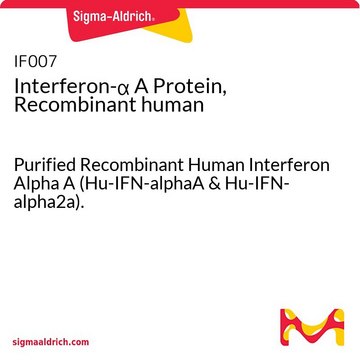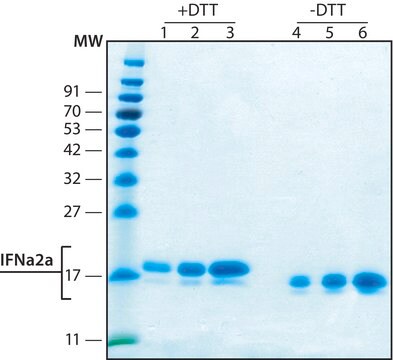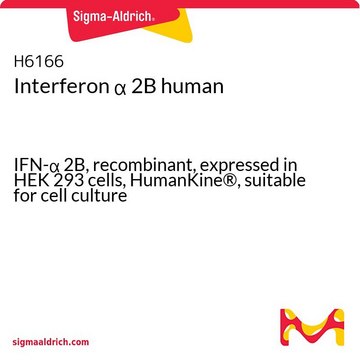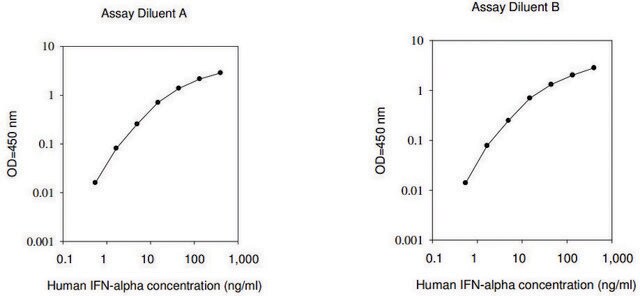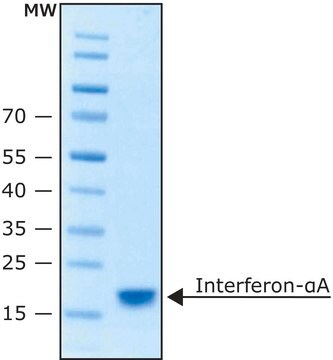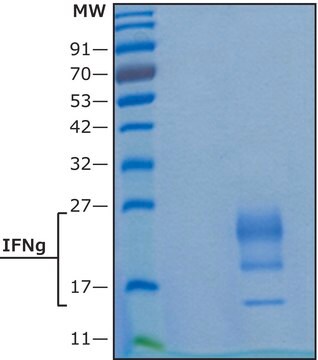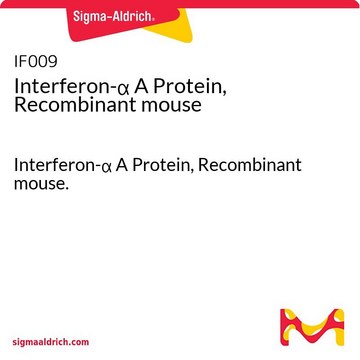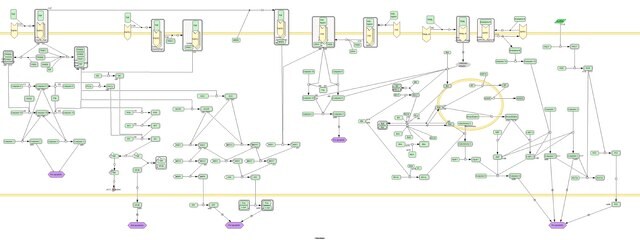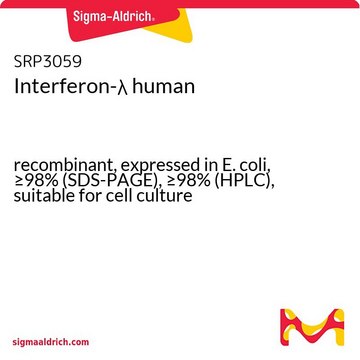SRP4596
IFN-alpha 1 human
recombinant, expressed in E. coli, ≥95% (SDS-PAGE), ≥95% (HPLC)
Synonym(s):
IFN-α 1, IFNA1, Interferon-α
About This Item
Recommended Products
biological source
human
recombinant
expressed in E. coli
Assay
≥95% (HPLC)
≥95% (SDS-PAGE)
form
lyophilized
potency
1x10^8 units/mg
mol wt
~19.3 kDa
packaging
pkg of 100 μg
storage condition
avoid repeated freeze/thaw cycles
impurities
endotoxin, tested
NCBI accession no.
General description
Application
- to treat Vero and breast cancer (MDA-MB-231) cells in interferon assay before viral infection[4]
- as a ligand to vaccinia virus B18R protein in analytical size exclusion chromatography[5]
- to treat chikungunya infected human embryonic kidney cell line (HEK293T) to test its effect on Signal transducer and activator of transcription 1 (STAT1) phosphorylation[6]
- as recombinant interferon to treat lung fibroblast cell line (IMR90) to monitor histone chaperone (HIRA) response[7]
Biochem/physiol Actions
Physical form
Reconstitution
Storage Class Code
11 - Combustible Solids
WGK
WGK 3
Flash Point(F)
Not applicable
Flash Point(C)
Not applicable
Choose from one of the most recent versions:
Certificates of Analysis (COA)
Don't see the Right Version?
If you require a particular version, you can look up a specific certificate by the Lot or Batch number.
Already Own This Product?
Find documentation for the products that you have recently purchased in the Document Library.
Customers Also Viewed
Our team of scientists has experience in all areas of research including Life Science, Material Science, Chemical Synthesis, Chromatography, Analytical and many others.
Contact Technical Service
